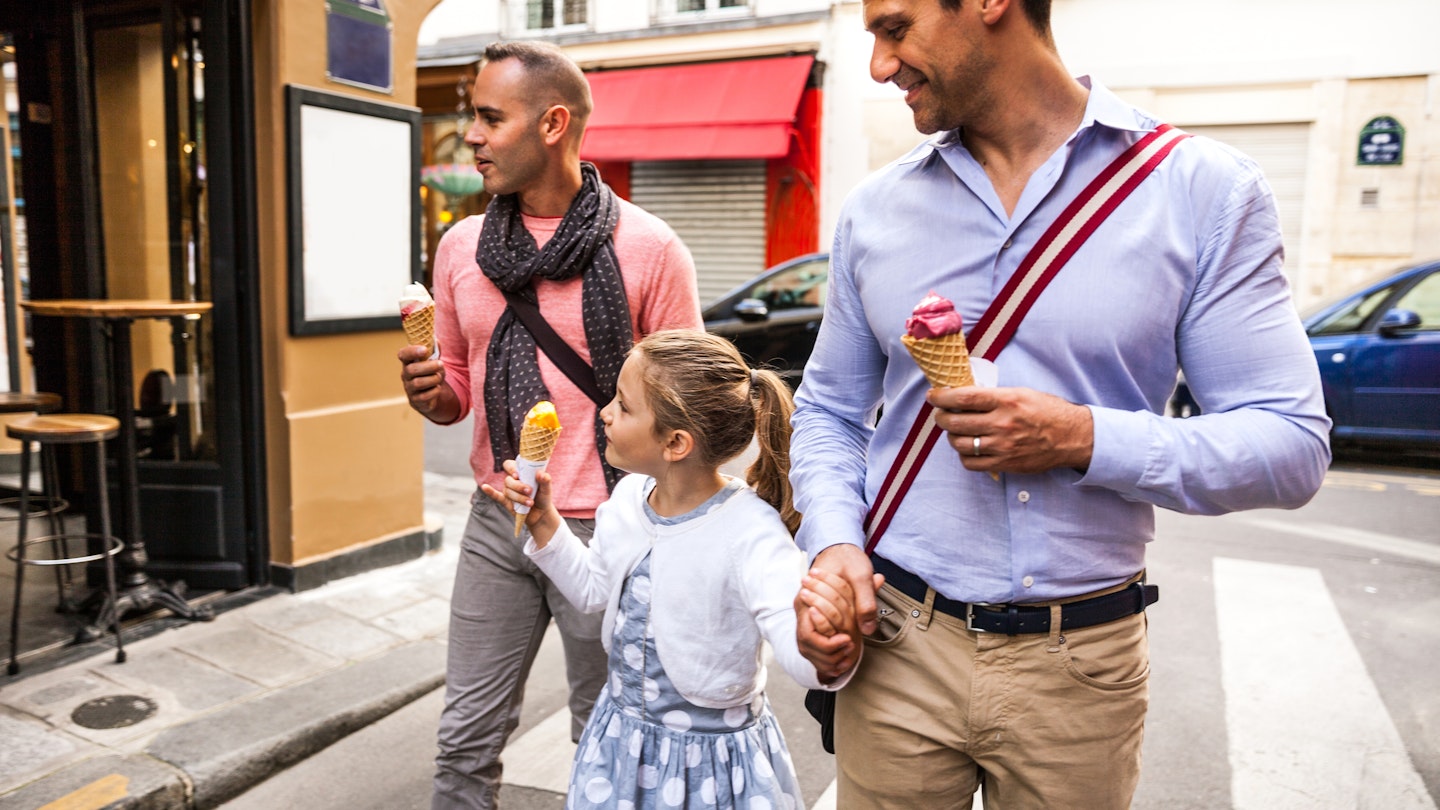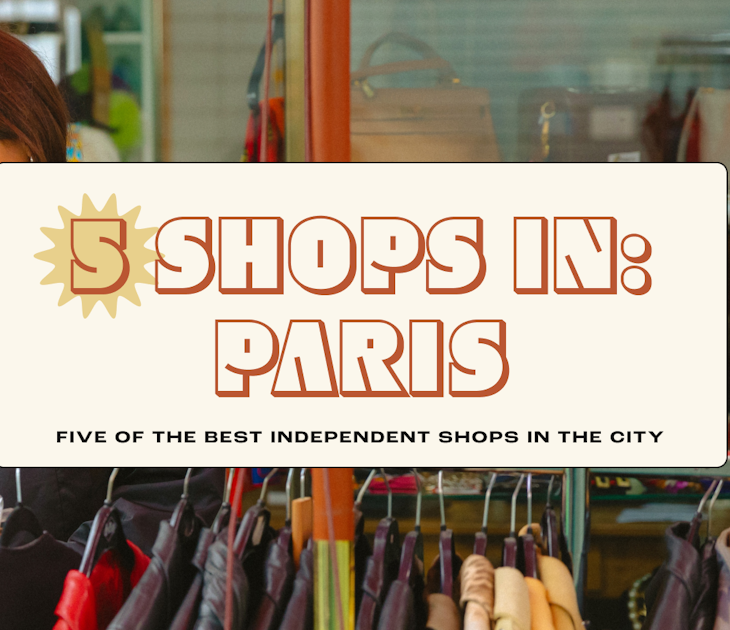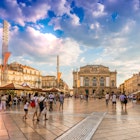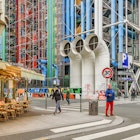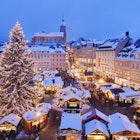Named for the French mainland’s hexagonal shape, l’Hexagone contains an astonishing diversity of natural and urban landscapes packed with exhilarating activities.
Glittering monuments, medieval villages, rolling vineyards, soaring peaks, pounding surf: France has it all, and so much more it’s hard to know where to start. Find out how to get the most out of your visit with 15 of the very best things to do in France.
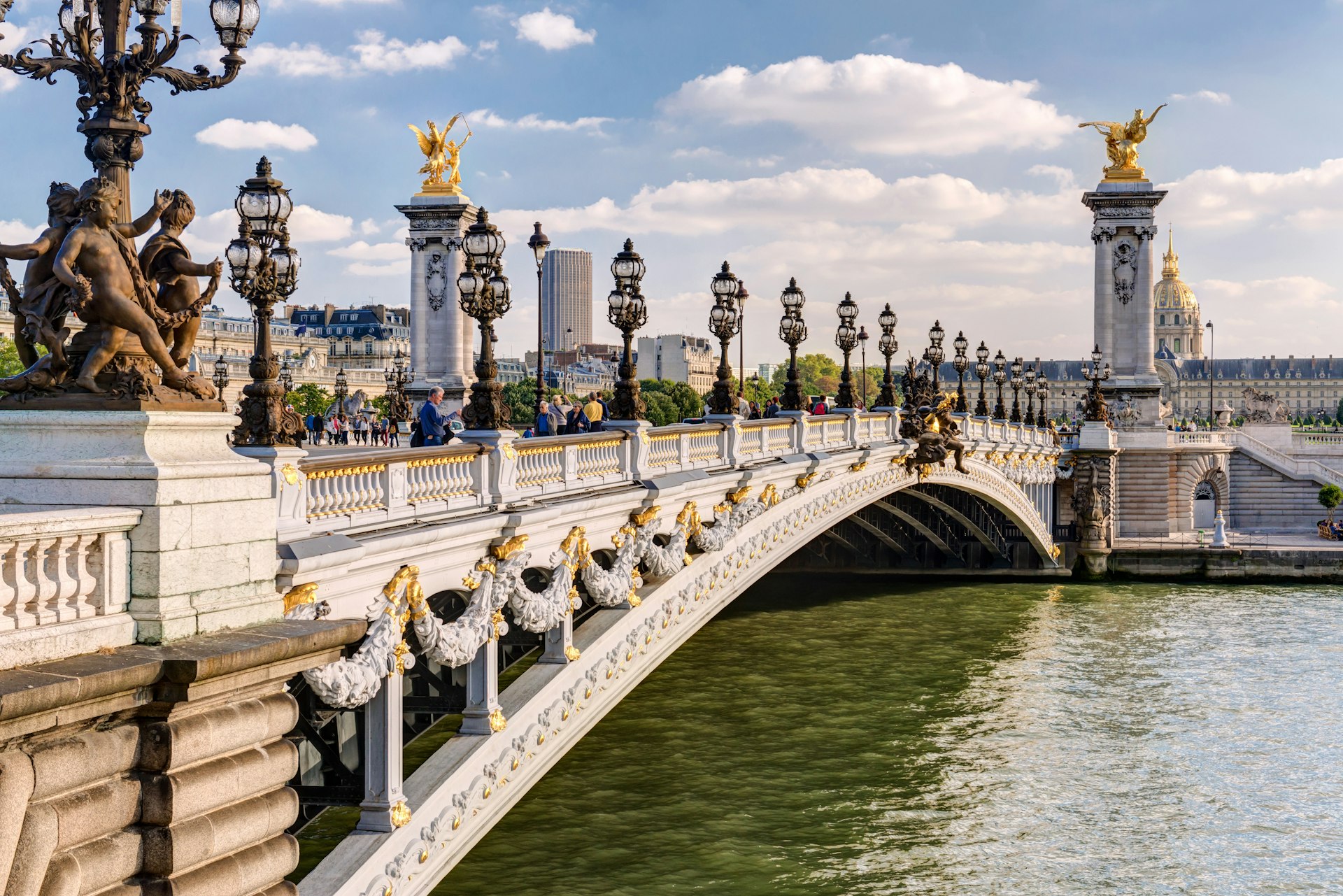
1. Cruise through the heart of Paris
Flowing through central Paris, the Seine is flanked by many of the French capital’s most emblematic sights. Whether it's day or night, when the river’s ripples reflect the illuminated monuments, getting out on the water sees first-time visitors fall for Paris’ charms and return travelers – and even locals – rekindle the magic.
Less touristy and more flexible than standard sightseeing cruises, the Batobus makes a nearly two-hour loop, and it’s the ultimate ticket to Paris, with all-day passes that let you hop on and off as often as you like.
It makes nine stops: the Eiffel Tower; Invalides military complex (and the city’s most beautiful bridge, Pont Alexandre III); Musée d'Orsay, with impressionist, post-impressionist and art nouveau masterpieces; the chic cafes and boutiques of St-Germain des Près; Notre Dame cathedral; Jardin des Plantes (botanic gardens), bordering the Latin Quarter; Paris’ city hall, the Hôtel de Ville (adjoining Le Marais’ hip bars and restaurants); the rambling Louvre, showcasing antiquities and art, including the Mona Lisa; and Place de la Concorde, near the Arc de Triomphe and luxury-shop-lined Champs-Élysées.
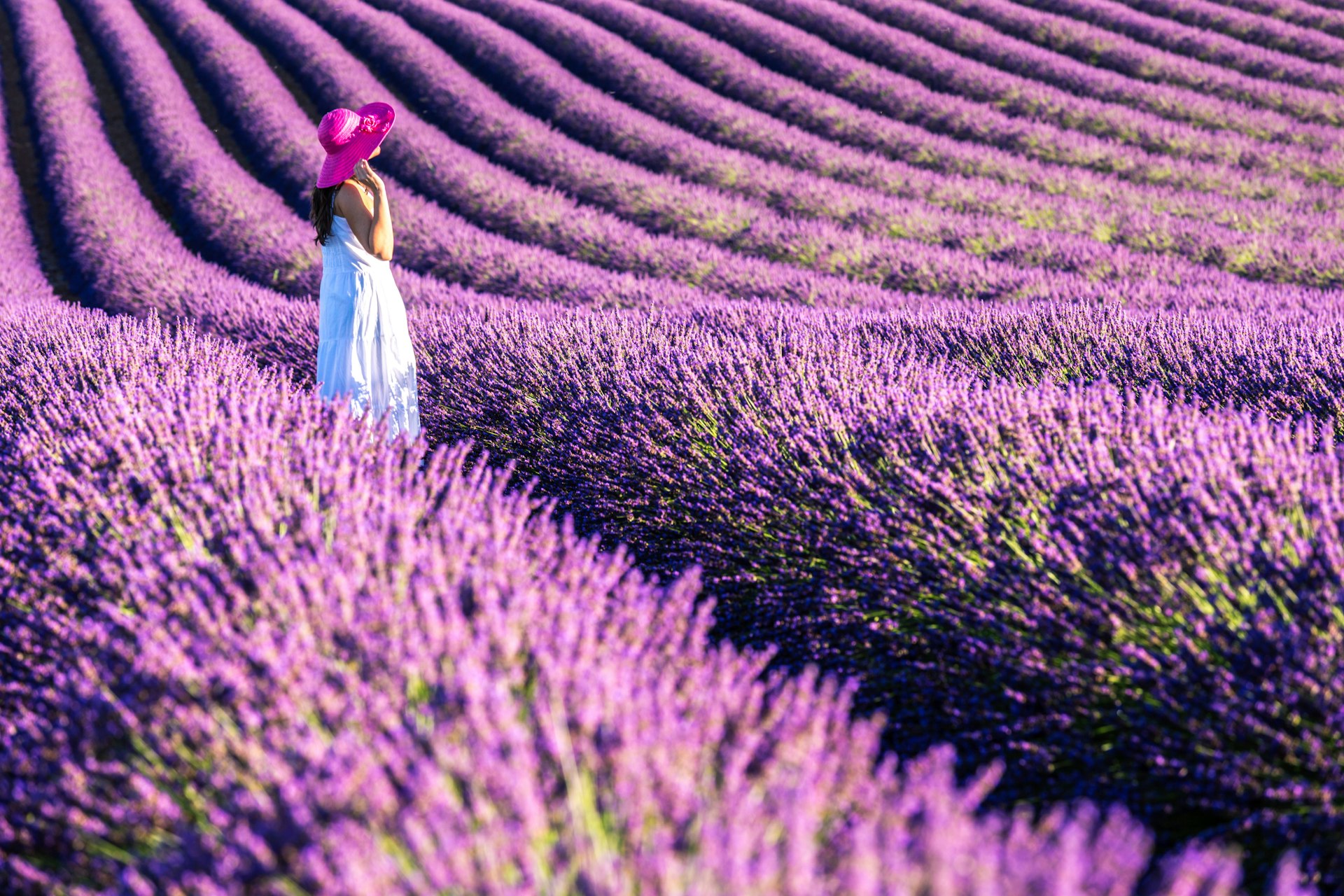
2. Breathe in the scent of Provence’s lavender fields
In the south of France’s sun-drenched region of Provence, lavender blazes violet-blue from June to August, peaking in July. Driving along Les Routes de la Lavande (Lavender Routes), open your car windows to let in the perfume from the rows of fragrant flowers upholstering the countryside like corduroy.
The best place to learn about lavender’s history, harvest and production is at eco-museum Musée de la Lavande in the picturesque Luberon; book ahead for workshops, such as painting with scented watercolors, and bring ingredients from Provence’s markets for a picnic.
Idyllic locations to snap a quintessential photo also include Abbaye Notre-Dame de Sénanque, a 12th-century abbey framed by lavender; the blooming fields around the honey-colored village of Sault and farms and distilleries on the Valensole plateau, beneath the scoured limestone summit of Mont Ventoux.
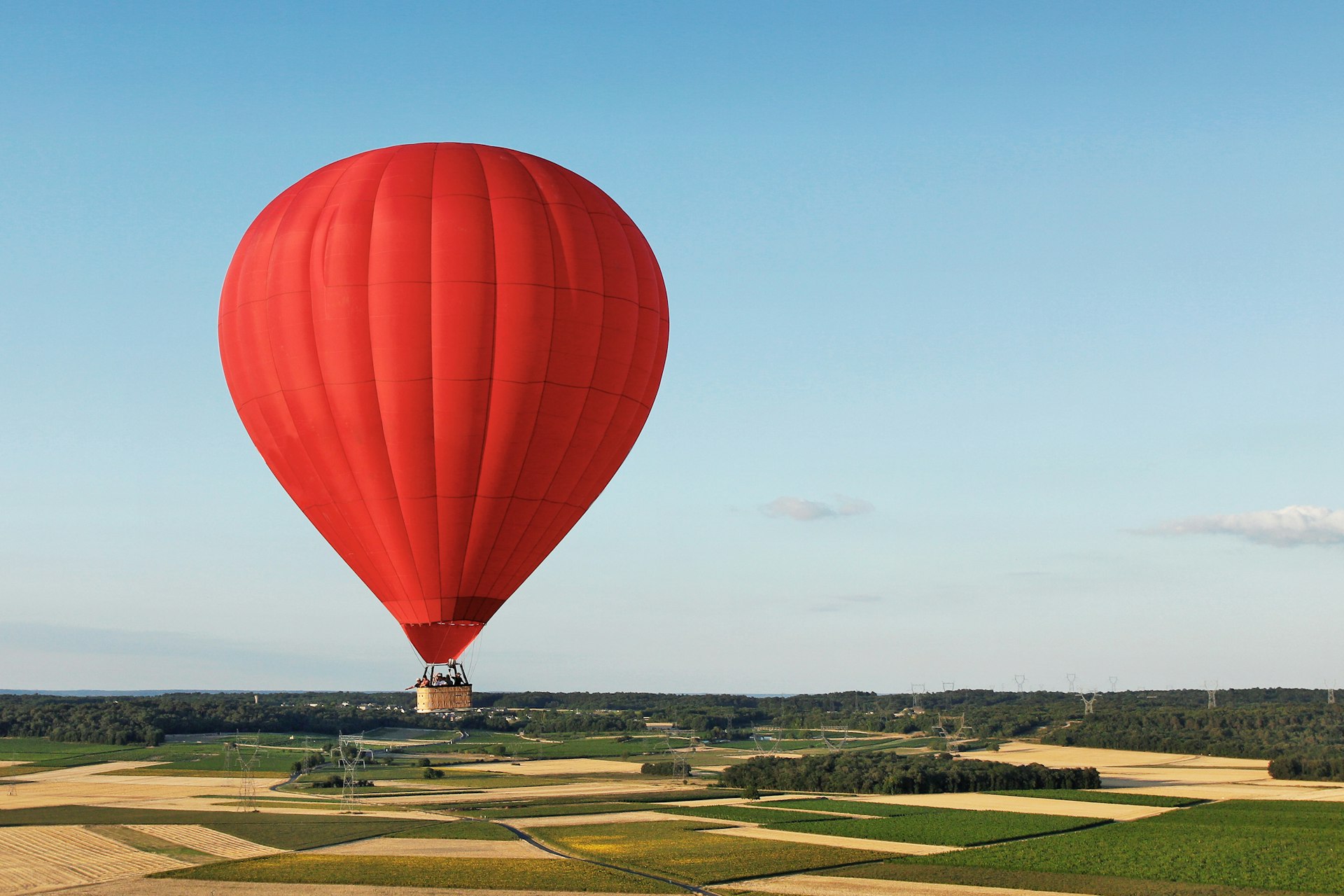
3. Float over fairy-tale Loire Valley châteaux in a hot-air balloon
Southwest of Paris and surrounded by vineyards, the sumptuous castles and aristocratic estates in France’s Loire Valley make up a giant Unesco World Heritage site that’s even more spellbinding when viewed from the air.
France’s Montgolfier brothers invented the montgolfière (hot-air balloon) in the 18th century, and more recent forms of transport still can’t compete with drifting with the wind while soaking up the views in – other than the hiss of the burner – blissful silence. From April to October, when flying conditions are best, companies such as France Montgolfières operate balloon flights in the Loire Valley just after sunrise and before sunset, with a celebratory toast upon landing.
4. Find epicurean heaven in Burgundy
With ribbons of stone-walled vineyards first planted by Romans and tended by monks from the local abbeys, bucolic Burgundy (Bourgogne in French) to Paris’ southeast is synonymous with the wines that accompany regional specialities, like snails, poultry, beef, truffles, mustard, cheeses, blackcurrants and gingerbread.
Burgundy’s capital, Dijon, is a perfect place to dive in: the Unesco-protected “French gastronomic meal” is the centerpiece of the 2022-opened Cité Internationale de la Gastronomie et du Vin (International City of Gastronomy and Wine), which sprawls across 6.5 hectares (16 acres). Whet your appetite at its array of exhibitions, shops and wine-school and cookery classes, and satiate it at the array of restaurants and spectacular wine bar.
South from Dijon, some of the world’s most famous vineyards unfold along the Route des Grands Crus.

5. Watch fountains dance to baroque music at Versailles
Wandering through ornate gardens in summer as plumes of water leap and splash to dramatic baroque music transports you back to the French monarchy’s glory days at the Château de Versailles.
France’s most opulent palace was built for King Louis IX on the site of his father’s hunting lodge, 22km (13 miles) southwest of Paris in the mid-17th century by the finest architects and artisans of the day. Louis XVI and his queen, Marie-Antoinette, later reveled in its excess, until the French Revolution ended the party and they were guillotined.
On summer Saturdays, you can relive that lavish lifestyle with a “Royal Serenade” in the palace’s glimmering Hall of Mirrors. Reserve ahead for these and other seasonal events, such as nighttime shows with torches, candles and fireworks illuminating the gardens. The palace and grounds can be toured year-round.

6. Hit the slopes of the world’s largest ski resort in the French Alps
Schussing through fresh powder reaches its zenith at Les 3 Vallées. Over a vast natural playground covering upwards of 45,000 hectares (111,197 acres), with 600km (373 miles) of ski runs and a cumulative 62,000m (203,412ft) of vertical drop and boundless free-riding opportunities, this is the largest ski resort in the world. And its altitude means the snow season stretches from November into May (outside of which the hiking and mountain biking are epic).
At 2300m (7546ft), Val Thorens is Europe’s highest ski village; the Boismint & Plan de l’Eau’s descent is one of Les Trois Vallées’ trophy runs. (Others include St-Martin de Belleville’s Jérusalem, Meribel’s Olympic Roc de Fer and Courchevel’s Eclipse.) Rural Orelle, with a cable car carrying you directly to Val Thorens, makes a cheaper, off-the-beaten-track base.
7. Ride the waves in and around Biarritz
On southwestern France’s Atlantic coast, Biarritz’ belle époque villas, striped beach tents and ritzy cafes, restaurants and spa hotels retain a cachet from Napoleon III’s holidays here. But you’re also as likely to see surfers’ vans trawling the coast on the lookout for legendary waves in what is now the surf capital of Europe.
Breakers roll in to the golden sweep of sand at Biarritz’ main city beach, Grande Plage. Beyond the 19th-century lighthouse to the north, Anglet has 11 beaches extending more than 4km (2.5 miles), renowned for their consistent swell and powerful barrels.
North again, Capbreton and Hossegor host major international competitions. Surf schools can get you out on the waves – and above them, with awesome conditions for kitesurfing; choose one with Féderation Française de Surf (FFS) registration.
8. Tour subterranean Champagne cellars in Épernay
Beneath Épernay’s elegant streets, a staggering 200 million bottles of bubbly are aged in a maze of more than 110km (68 miles) of chilly chalk cellars. Delve below ground on tours of famous Champagne houses, including Mercier, Moët & Chandon and De Castellane.
Above ground, the superbly restored mid-19th-century red-brick mansion Château Perrier now houses the sparkling 2021-opened Musée du Vin de Champagne et d’Archéologie Régionale (Museum of Champagne Wine and Regional Archaeology). From Épernay, you can set out into the vineyards along a Champagne wine trail.
9. Retrace the footsteps of medieval pilgrims to Mont St-Michel
Like a mirage appearing across the shimming sand – or rising from the sea at the speed of galloping horses, thanks to Europe’s highest tidal range of up to 15m (49ft) – the extraordinary abbey-island of Mont St-Michel sits off the coast of Normandy in northwestern France. Fortified during the Middle Ages, the turreted, spire-topped abbey still sees Benedictine monks hold services here most days.
Arriving at Mont St-Michel is something of a pilgrimage itself, as you cross the causeway by maringote (horse-drawn carriage), motorized shuttle or on foot (steep steps on the island are unavoidable). For the original pilgrim experience – and an up-close appreciation of the bay’s natural environment, including 130 different bird species – walk barefoot across the bay with an accredited guide at low tide.
10. Visit the birthplace of cinema in Lyon
France’s third-largest metropolis, at the confluence of the Rhône and the Saône Rivers in the country’s southeast, Lyon has long been a creative hub. In 1895, brothers Auguste and Louis Lumière shot the first-ever motion-picture reels of workers leaving their photographic-plate factory, La Sortie des Usines Lumières (Exit of the Lumières Factories).
Across from the original "Hangar du Premier-Film" (“First Film Shed”), preserved as a historic monument and integrated into a contemporary screening center, is the family’s beautiful art nouveau villa, where museum exhibits include the brothers’ Cinematograph and other inventions and equipment that brought the magic of cinema to life. The gardens are a venue for Lyon’s Festival Lumière each October, with more screenings, events and ceremonies around the vibrant city.
11. Cycle around Carnac’s otherworldly megaliths
Shrouded in the mists of Celtic history in northwestern France, Carnac in Brittany is home to the greatest concentration of megalithic sites anywhere on earth.
Probe their origins at the Maison des Mégalithes, and pedal across the windswept landscape featuring more than 3000 menhirs (standing stones), dolmens (capstone tombs) and tumuli (grave mounds) dating from Neolithic times – estimated to be between 5000 and 3500 BCE, making them older than Stonehenge.
Pick up bikes (traditional or electric) from a handful of outlets around Carnac. Access is restricted in the busy summer months, but in any case, the ancient alignments are at their most mystical in the early morning or approaching dusk on winter days.
12. Marvel at Matisse’s artistry on the Côte d'Azur
Stroll alongside Nice’s pebbled beach on the palm-lined Promenade des Anglais almost any time of year, and you’ll see why the glorious French Riviera light drew artists such as Renoir, Picasso and Henri Matisse.
At the Genoese villa housing Nice’s Musée Matisse, you can get an intimate perspective on his paintings, drawings, prints, cut-outs and sculptures and visit his grave across the park.
For the most ethereal example of Matisse’s work, head 32km (20 miles) east to Vence, where seeing sunshine filter through the stained-glass windows of the chapel he designed, the Chapelle du Rosaire, is a profoundly spiritual experience.
13. Paddle beneath the mighty Roman aqueduct Pont du Gard
From Collias in southern France’s Languedoc, a ninety-minute paddle by canoe or kayak takes you along the winding Gard past sunflower fields, rock formations and extraordinary Pont du Gard. A legacy of the Romans from circa 19 BCE, this three-tier, 52-arch aqueduct once transported water from Uzès to Nîmes. Its enormous size becomes even more apparent looking up from underneath.
Canoeing is possible from March to October, but in spring and early summer, the water level can be high and the current strong; late summer and autumn are prime. To save the return journey, Collias’ rental outfits can collect you a further half-hour downstream.
14. Hike up Puy de Dôme to survey the volcanic landscape
Deep in central France, you can sense the landscape’s evolution in one of the country’s wildest and most remote natural regional parks, the Parc Naturel Régional des Volcans d'Auvergne.
Part of the Chaîne des Puys, a 40km (25-mile) string of craters, cinder cones and lava domes now cloaked in beech and spruce forest, the pinnacle, Puy de Dôme, rises 1465m (4806ft). Climbing the dormant volcano to the grassy summit rewards you with swooping bird's-eye views. Two routes, the steep Chemin des Muletiers (45 to 90 minutes) and longer but steadier Chemin des Chèvres (two-and-a-half hours) make the ascent.
For an easier alternative, board the Panoramique des Dômes cog railway for a 15-minute trip. To get up even higher, spiral above Puy de Dôme on a paragliding flight.
15. Ring in the festive season at Strasbourg’s historic Christmas market
While Strasbourg is as pretty as a picture in summer, when geraniums spill out the half-timbered buildings’ window boxes in canal-laced Petite France, the lovely Alsatian capital in northeastern France is even more enchanting come Noël. Dating back to 1570, its Christkindelsmärik is the oldest Christmas market in France and one of the oldest in Europe.
From late November to late December, hundreds of stalls selling handcrafted toys, steaming mulled wine and bredle (Christmas cookies made with spices such as cinnamon) set up around Strasbourg’s 15th-century Gothic cathedral. Place Kléber’s 30m (98ft) Christmas tree from the nearby Vosges mountains is strung with decorations, and twinkling lights throughout the city create a winter wonderland.
